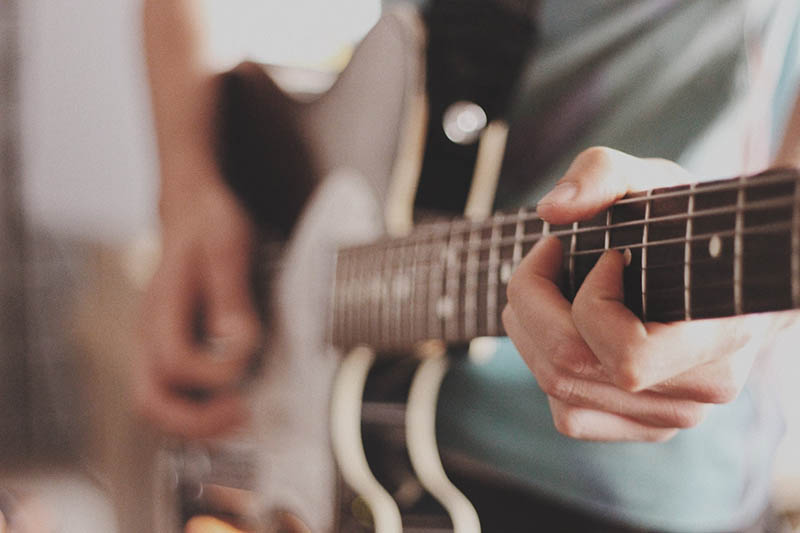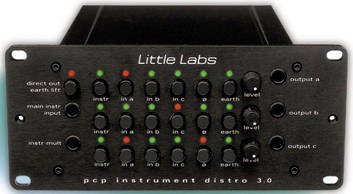
Guitars are equipped with either passive or active pickup systems. Passive is where the strings vibrate in the magnetic fields of the pickup and generate an electrical signal that is processed by passive tone control circuitry and then fed to the output jack.
Everything is the same with active pickups except that the electrical signal from the pickups is electronically amplified within the tone circuitry and then passed out the output jack.
Be aware of which system is used in the guitar when recording direct. Vintage guitars, because of the older and weaker pole-piece magnets in the pick-ups, put out an even weaker signal, and this is why a lot of people replace those pickups with newer and hotter pick-ups.
Further, when attaching a direct box (or anything else such as a digital tuner), the output impedance is lowered (if the attached device is not of sufficiently high impedance) diminishing the guitar’s signal further to say nothing of the tone, particularly the high frequencies. Only use a direct box with a very high input impedance to avoid an effect called “loading.”
On the active side, there is less stress since the built-in amplifier inside the guitar (that always seems to need a new battery) jumps up the level and lowers the impedance. As a result, whatever it’s connected to has less affect.
The guitar’s super-output level, if not treated correctly, may become a mixed blessing because it affects your amp’s tone and settings and the direct recording sound.
When direct recording guitars with active pickups, I use a simple, good quality matching transformer, (such as a Jensen), that converts to the standard microphone pre-amp input impedance of about 150 ohms.
I hardly ever use an active direct box for active guitars – too much activity! For passive guitar pickups, I like to use active direct boxes, such as models from Raven Labs and Countryman Associates, or the Demeter Tube models. These are all electronic isolation amplifiers with extremely high input impedances that will not load your guitar’s output signal and change the tone.
Speaker Jack Direct
Another way to record direct is by way of the speaker jack. A cable from the external speaker jack is connected to a matching transformer and that signal is recorded. The difference is that the sound of the amp, (with all its personality), and the guitar are recorded.
There are several models of power soaks or power resistor loads available that take the place of the speaker and provide an isolated recording line output. You can also put a mic on the speaker and mix in the direct signal. You’ll have to check phase again and probably use an equalizer.
Musicians In The Control Room (Or Not!)
For an electric guitarist, there’s no better way to achieve a great sound than by sitting or standing next to the amp. There is an important interaction between the guitar’s body and the vibrations set up by the amplifier.
Increased and unique sustain qualities, feedback effects and tone enhancement due to acoustic reinforcement only happen if the player is located next to the amp. When I listen to some of the newer rock records, I miss that sound.
In the recording studio, it may not be practical for the guitar player to be near his/her amp since the wide volume differences of all the sound sources in the same room (drums, bass, other guitars and singers) preclude the use of higher guitar amp levels during live band tracking sessions.
So, the guitar amp or speaker cabinet is placed in an isolation booth for maximum control and separation.
The guitarist can sit out in the studio with the drummer and the rest of the band, or even in the control room with the producer and engineer, but must rely on a good monitor mix to play along.
In this scenario, the guitarist loses all sonic interaction between his guitar and amplifier retaining only the basic tonal qualities of his amp.
Typically when a player is remote from the amplifier, the amp top is set next to the guitarist, and heavy-gauge cables connect it to the speaker cabinet.
In the case of one-piece combo amps, running super-long guitar cords from the guitar to the amp is unacceptable, since the distributed capacitance along the long cable acts as a high frequency roll-off filter on the guitar’s delicate output signal. I recommend using a small buffer amplifier for this job that “conditions” or buffers the guitar’s signal for long cable runs.

The Little Labs PCP Instrument Distro, shown in Figure 9, is a distribution amplifier and switching matrix for sending electric guitar signals to multiple amps and/or at the same time, to +4 dBv professional outboard signal processing gear. The Distro also provides a clean, direct signal for recording directly to your recorder.
